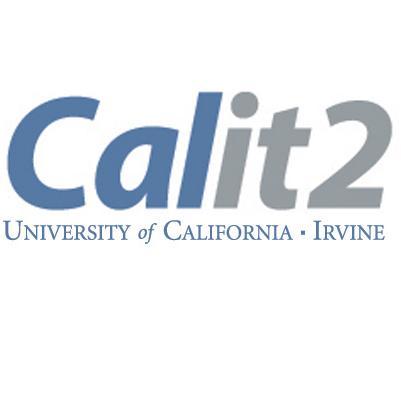 Calit2 focuses its work in the context of telecommunications and information technology as related to the evolving Internet. The Internet is profoundly changing society and is likely to have impacts beyond what can be imagined today. Therefore, it is increasingly critical to conduct research to understand how it will affect our personal lives, laws, and economic leadership. That is Calit2’s exciting charge. The understanding that arises from this research will help us manage the massive change that lies ahead. At the center of Calit2’s research mission are the multiple revolutions in core technologies and applications, including the exponential increase in the speed of the Internet. In fewer than 20 years, Internet delivery of bits has gone from 300-baud modems to 10-gigabit Ethernet, a 30-million-fold increase. But the evolution of the Internet is driven by a range of technologies across a range of disciplines: photonics and wireless communications, information technology, nanotechnology, and biological micro-electro-mechanical systems (MEMS), to name a few. The interactions among these disciplines will cause even more radical change. In this context, the institute is building horizontal links among departments to foster multidisciplinary studies and creating research teams that integrate individuals’ deep expertise across disciplines to enable more comprehensive studies beyond those led by single principal investigators. We expect this new approach will redefine the very nature of the university system – the traditional home for fundamental research. The research projects under Calit2’s aegis bring together faculty experts and researchers who typically would not be housed under the same roof, much less in adjacent labs: new media artists and computer scientists| physicists and bioengineers| electrical engineers and cognitive scientists| and so on. While many of them are working on subjects of relevance to the future of telecommunications and the Internet, they are working on different time scales. Some delve into core technologies on a 10- to 20-year time horizon, while others are taking research from the lab bench to prototype in hopes of implementing the technology in a 12- to 18-month time frame. In some cases, researchers are even working with Calit2 partners to commercialize their research findings for the benefit of California and society at large. And the findings to date show that this new paradigm for research is yielding both incremental and fundamental breakthroughs at a pace that will only quicken now that Calit2’s new research buildings in Irvine and San Diego have come onstream.
Calit2 focuses its work in the context of telecommunications and information technology as related to the evolving Internet. The Internet is profoundly changing society and is likely to have impacts beyond what can be imagined today. Therefore, it is increasingly critical to conduct research to understand how it will affect our personal lives, laws, and economic leadership. That is Calit2’s exciting charge. The understanding that arises from this research will help us manage the massive change that lies ahead. At the center of Calit2’s research mission are the multiple revolutions in core technologies and applications, including the exponential increase in the speed of the Internet. In fewer than 20 years, Internet delivery of bits has gone from 300-baud modems to 10-gigabit Ethernet, a 30-million-fold increase. But the evolution of the Internet is driven by a range of technologies across a range of disciplines: photonics and wireless communications, information technology, nanotechnology, and biological micro-electro-mechanical systems (MEMS), to name a few. The interactions among these disciplines will cause even more radical change. In this context, the institute is building horizontal links among departments to foster multidisciplinary studies and creating research teams that integrate individuals’ deep expertise across disciplines to enable more comprehensive studies beyond those led by single principal investigators. We expect this new approach will redefine the very nature of the university system – the traditional home for fundamental research. The research projects under Calit2’s aegis bring together faculty experts and researchers who typically would not be housed under the same roof, much less in adjacent labs: new media artists and computer scientists| physicists and bioengineers| electrical engineers and cognitive scientists| and so on. While many of them are working on subjects of relevance to the future of telecommunications and the Internet, they are working on different time scales. Some delve into core technologies on a 10- to 20-year time horizon, while others are taking research from the lab bench to prototype in hopes of implementing the technology in a 12- to 18-month time frame. In some cases, researchers are even working with Calit2 partners to commercialize their research findings for the benefit of California and society at large. And the findings to date show that this new paradigm for research is yielding both incremental and fundamental breakthroughs at a pace that will only quicken now that Calit2’s new research buildings in Irvine and San Diego have come onstream.
Photo Gallery

|
CA Inst of Telecom & Info Tech (Calit2)
